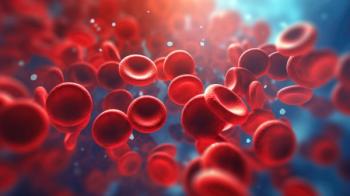
- Special Issues-08-01-2012
- Volume 30
- Issue 8
SFC
With further improvements in instrumentation and column design, supercritical fluid chromatography (SFC) Is becoming a mainstream technology.
With further improvements in instrumentation and column design, supercritical fluid chromatography (SFC) Is becoming a mainstream technology. Participants in this forum are Martin Vollmer, Agilent Technologies and Harbacksh Sidhu, Waters Corporation.
What application areas do you think SFC users have not yet fully tapped into?
Vollmer: In the achiral world I see especially classical normal-phase application as a target for SFC. SFC is much faster than normal-phase chromatography, the methods are more robust, and SFC is a green technology that avoids highly toxic and expensive solvents. In addition, the analyte polarity range that can be covered is much broader than with classical normal-phase separations. SFC is also an excellent technology to deal with pesticides, lipids, polymers and polymer additives and fat soluble vitamins. For some of those compounds it is necessary to use gas chromatography (GC) and liquid chromatography (LC) to cover the complete analyte range. SFC has the potential to cover all of the compounds in a single assay. For chiral separation there is still potential to replace current LC-based chiral methods since SFC usually provides a shorter analysis time and superior selectivity.
Sidhu: In the early to mid 2000s, preparative SFC started to carve out a niche in the pharmaceutical industry as the ”go to” technique for chiral separations. Analytical-scale SFC instrumentation was barely adequate to deliver results in support of purification; thereby, it was relegated to a “qualitative” niche function. Prior to technological advances and new instrumentation, SFC was not recognized as an accepted technology, but leading chromatographers recognized its potential in the pharmaceutical industry and beyond evidenced by their publications using SFC in diverse and wide-ranging application areas. Consequently, SFC did not gain traction despite having potential advantages over current techniques. Recent advances in instrumentation and columns along with an array of available detection options such as UV, evaporative light scattering (ELS) and mass spectrometry (MS) with mature chromatography data systems enable SFC to surpass LC and GC technologies in demonstrated and future application areas. SFC technology’s advantages exceed long-accepted benefits of increased speed, separations quality, and solvent reduction. The technique is compatible with sample handling and overall workflow employed for small molecules in the pharmaceutical, food and chemical industries. The problem-solving and time-to-result capabilities extend to broad application areas in small molecule space.
How is the adoption of SFC influencing the way that new chiral separation methods are being developed?
Vollmer: SFC in general is able to cope with the same chiral columns used in LC. However, it is difficult to predict which column and solvent combination delivers the best result. Highly professional automated method development with the corresponding hardware, clever and flexible valving concepts for column and solvent selection, and intuitive software tools for method setup and data analysis are key to provide ease of use in SFC method development. This avoids unnecessary trial-and-error approaches and will increase lab productivity. I see a very high potential in SFC–ultrahigh-pressure liquid chromatography (UHPLC) hybrid method development systems since it is often not clear whether LC or SFC provides the better resolution. Automated Method development using both LC and SFC in a single system will speed up the time to develop the most suitable method for a given analyte mix significantly.
Sidhu: SFC should be the first choice for chiral separations, due to its high success rate and compatibility with chiral stationary phases. It is also a more rugged and stable separation technique than normal-phase chromatogrpahy. Chiral separations require column screening for optimal method development. SFC excels in this respect by delivering separation speed, equilibration, and resolution along with significant solvent reduction compared to normal-phase chromatography.
What kind of developments do you see on the horizon for SFC?
Vollmer: First, seamless interfacing with non-UV detectors such as MS and ELS will become more important in combination with SFC. They bear the advantage that they do not suffer from refractive index effects and changes in pressure and temperature do not affect sensitivity dramatically. In addition compounds without a chromophore are covered by MS and ELS detection. High-end MS systems such as triple quadrupole (QQQ), time-of-flight (TOF), and quadrupole TOF hyphenated to SFC will become more relevant in the future, enabling higher sensitivities and unbiased compound and impurity identification with SFC.
Second, small particle technology and small internal diameter columns can speed up chiral and achiral analysis and sample throughput even further since SFC can be conducted 2–3 times faster than LC without losing separation efficiency. This will require optimized instruments to minimize extracolumn volume and respective chiral column technology.
Third, instrumentation that provides further flexibility to conduct orthogonal method development with LC and SFC on a single instrument will expand capabilities and ensure investment protection if analytical requirements are changing.
Fourth, hopefully the development of column technology for chiral and achiral separations will lead to more universal stationary phases, which should reduce the number of different columns that need to be screened to find out the best separation conditions.
Sidhu: SFC will follow a trend comparable to HPLC. HPLC performance advances were realized with the use of sub-2-µm particle packed columns. HPLC had plateaued prior to sub-2-µm particles, and significant advances were made after their adoption. As a result of better mass transfer, increased speed and productivity is already inherent in SFC. Sub-2-µm particles will deliver even greater benefits to SFC, now that instrument challenges are overcome. We will see higher pressure range analytical systems to further enhance SFC’s capability for more applications using sub-2-µm particles. SFC has demonstrated use over a wide polarity range; CO2-only separations with density programming enable the use of flame ionization detection for universal detection of nonpolar compounds, and alcohol-modified CO2 can be used for separation of more polar species. Advances in SFC-specific column chemistries will enable more universal use and acceptance of the technology. Continued instrument and column development along with expanding application knowledge will elevate SFC as a mainstream technology in this decade.
Articles in this issue
over 13 years ago
HPLC/UHPLC & LC–MSover 13 years ago
Gas Chromatographyover 13 years ago
Data Handling/Softwareover 13 years ago
Capillary ElectrophoresisNewsletter
Join the global community of analytical scientists who trust LCGC for insights on the latest techniques, trends, and expert solutions in chromatography.




